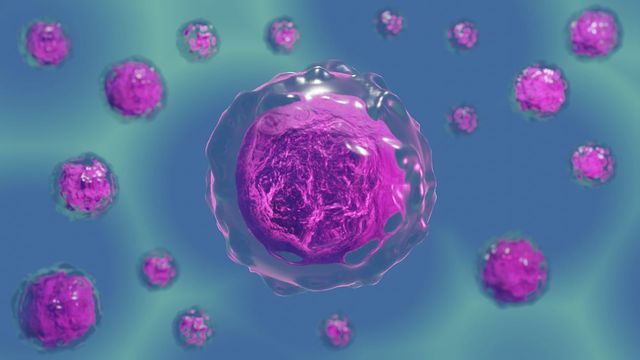Economies of Scale: The Top 5 Considerations for Successful Cell and Gene Therapy Fill/Finish Scale-Up

Cell and gene therapies promise treatments for many diseases, from cancer and HIV to cystic fibrosis and spinal muscular atrophy; the potential is only just starting to be realized. As medicines progress from research and development, through clinical trials and on to treat patients, production must scale to meet the growing demand. The transition from lab manufacture to commercialization presents significant challenges that a combination of planning and technology can help mitigate.
Fill/finish is an important area to consider, as maintaining sterility and product integrity, meeting regulatory requirements and delivering precision volumes of high-value product are vital. Unlike traditional broad-spectrum treatments, batch sizes are likely to remain small, either to treat small patient populations or even fully personalized autologous therapies. But lab-based, benchtop production methods that work for R&D and could be used for these small batches will not meet regulatory requirements or the efficiency needed for commercialization. So how can you successfully scale your cell and gene therapy fill/finish process to minimize manual involvement, reduce the specialized training required, and deliver high-quality, high-value products, efficiently?
1. Contamination control
“When I think of aseptic processing, I immediately think high risk,” Brooke Higgins, a senior policy advisor for global compliance in the US Food and Drug Administration’s Center for Drug Evaluation and Research, said at the International Society for Pharmaceutical Engineering’s 2023 Aseptic Conference .
Contamination is a huge risk in cell and gene therapy production, as even trace levels of contaminants can prove fatal to patients and the biological nature of the therapies prevents any final product sterilization. A comprehensive contamination control strategy is therefore key, not only to protect the patient, but also to avoid product loss and the associated costs and time delays, as well as protecting operators from potential hazardous materials.
Containment needs vary from product to product dependent on its makeup and application, so a best-fit solution is needed that also meets the scale-up timescale and cost plan. All containment solutions must control both viable and non-viable contamination in the space and the associated bioburden to protect the product. This can be achieved with appropriate barrier technologies or the incorporation of pre-sterilized single-use components.
Another source of contamination is human intervention, so where possible automation should be used to reduce the potential for human contamination. Sterility can be further enhanced by the use of barrier technologies powered by automation, and it is important to incorporate accessibility into process and equipment design so that batch-saving interventions can be made without compromising the aseptic, grade A environment. Automation brings the added benefits of increased process control and monitoring as well as improved efficiency.
2. GMP compliance
Hand-in-hand with contamination control is Good Manufacturing Practices (GMP) compliance which is essential for the commercialization of a product. In fact, the recent revision of GMP Annex 1 requires manufacturers to increase contamination control measures, barrier technology and automation to reduce risk to patients and operators. A comprehensive strategy should use a focused, risk-based approach to protect the critical areas. It is therefore vital that developers select the right technology and equipment partners to support the needs and delivery of GMP.
3. Skills and expertise
Like many industries, the biopharma industry is facing a skills shortage, especially when it comes to the challenges of cell and gene therapy manufacturing and GMP expertise. There are promising signs that this is changing, with the number of employees joining cell therapy, gene therapy and multifunctional facilities in the UK rising by 23% in 2022, but this ongoing growth brings increased training demands as training is both time-consuming and costly and does not account for staff turnover. Designing processes that are easy to use and maintain will therefore be a key benefit to all organizations, with automation in a process reducing the burden on staffing levels as well as the added benefit of delivering GMP best practice.
4. Supply chain
As with any new therapy, rapid delivery of treatment to patients in need is a priority, not just to deliver life-saving medicines, but also to see a return on the high levels of investment required for their development. A reliable and efficient supply chain is needed for both initial facility setup and to continue to supply any single-use components. For personalized treatments like cell and gene therapies, it may be necessary to build small-scale, localized production facilities to quickly deliver highly sensitive medicines to patients globally. Identical processing lines should be incorporated to ensure product quality and GMP compliance of each facility. This requires supply partners with a global footprint to meet the demand of both initial hardware and any processing inventory.
5. Products that can scale with you
At the start of the R&D process, manufacturing can seem like a distant concern, with drug development often taking over a decade. But to avoid later hold-ups, it is vital that organizations play the long game and consider processing needs as early as possible and the role of CDMOs in production capacity scale-up. Often therapies that look promising in early-stage development ultimately fail to deliver in large-scale clinical trials, either because they did not replicate earlier results or because processes could not be successfully scaled up.
Choosing a partner that can support your needs as you scale, using a common technology base, will minimize time and cost as output increases. The value this creates can be seen right from initial needs in R&D all the way through to higher volume cGMP production. The use of benchtop fillers through to production scale fill/finish lines that utilize the same technology in both dispense and single-use fluid path technologies can really help limit the time and cost of validation as volumes increase whilst ensuring consistent output. If the supplier can scale with the therapy using common technologies, and enabling scope and added value services, developers and producers can have the peace of mind that they can scale safely with tried, tested, validated and supported solutions reducing risk as uptake develops.
Success at scale
As innovation in R&D continues to deliver novel treatments, this innovation needs to be matched in manufacturing to deliver success at a global scale. Collaboration between manufacturing and R&D is vital to achieve this and ensure manufacturing doesn’t become the bottleneck in the delivery of effective medicines. Understanding current and future processing needs early will help when engaging with suppliers and partners to deliver the value and expertise required to support both near- and long-term goals.
Future challenges the industry will have to contend with include increasing competition and the race to become the first in curative medicines, the uniqueness of each product and associated processing requirements, and the uncertainty of development. All of these will be better navigated if working collaboratively with manufacturing partners who understand the unique demands of the promising but challenging industry.
About the author:
As a generalist with wide experience in project management, program management and team management, Helge Grosch, a product manager at Watson-Marlow Fluid Technology Solutions, has worked both in start-ups, running several smaller projects side by side, and established companies with full focus on one complex and ground-breaking medical device.







